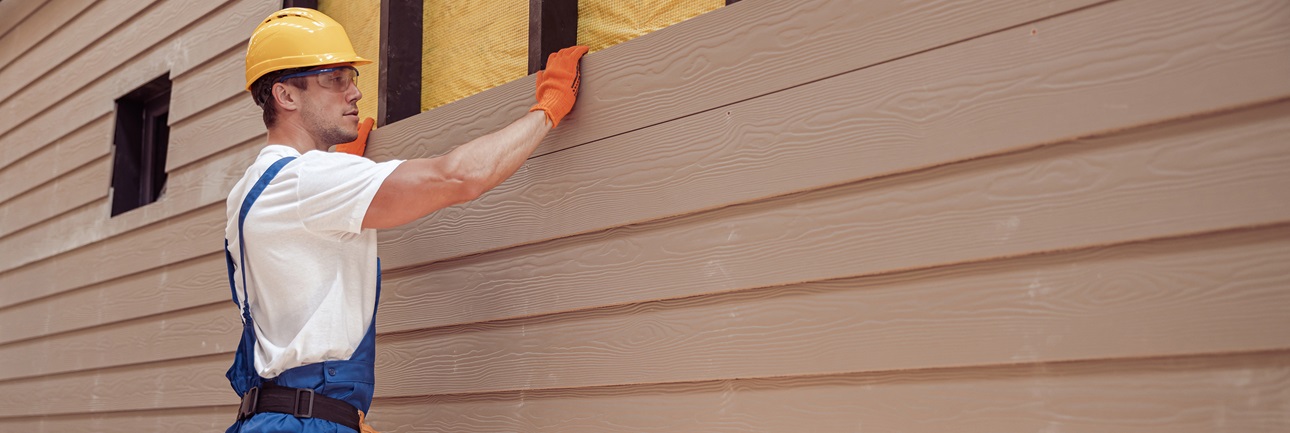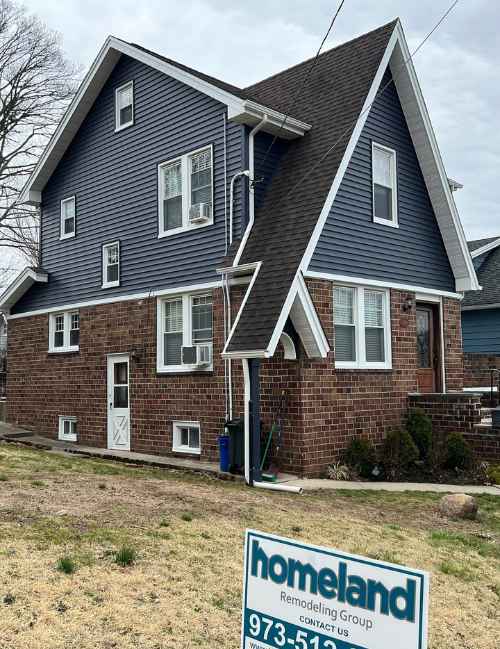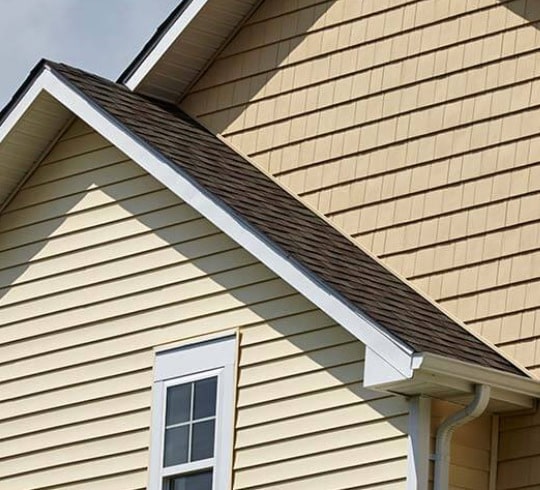The Essential Guide to the Numerous Sorts Of House Siding and Their Special Benefits
In the realm of home improvement, picking the best house siding is a vital decision that affects both aesthetic appeal and useful performance. The range of products available, such as timber, vinyl, fiber brick, metal, and concrete, each offer special advantages that deal with different demands and choices. Recognizing these distinctions can significantly improve the long life and value of a residential or commercial property - morris siding contractor. With so many options to think about, which home siding product absolutely stands out for your particular task? Discovering these selections can bring about informed decisions that align with both design and functionality.
Timber House Siding
Timber home siding, a prominent choice for property exteriors, provides a timeless visual that integrates natural charm with structural integrity. This house siding product is offered in various designs, consisting of clapboard, tiles, and board-and-batten, allowing home owners to tailor their façade to match their design preferences. Wood house siding is typically crafted from long lasting types such as cedar, redwood, or yearn, which are known for their durability and ability to hold up against ecological stressors.
Among the primary advantages of wood siding is its superb insulation properties, which can add to energy performance and lower home heating costs. In addition, wood house siding is naturally degradable, making it an eco-friendly alternative when sourced sustainably. Regular upkeep, including painting or discoloration, can prolong its life expectancy and improve its look, permitting property owners to maintain the natural appeal of the wood.
Nevertheless, potential disadvantages consist of susceptibility to insects, rot, and weather condition damage, requiring adequate treatment and upkeep - morris siding contractor. Regardless of these issues, when appropriately cared for, wood home siding can provide a lovely and long lasting remedy that improves the personality of a home while offering a warm, welcoming environment

Vinyl Exterior Siding
Vinyl house siding has become a leading selection for house owners seeking a low-maintenance exterior alternative that integrates sturdiness and affordability. This functional material is crafted from polyvinyl chloride (PVC), making it immune to various climate condition, including dampness and UV rays. As a result, plastic exterior siding does not warp, rot, or discolor, ensuring durable aesthetic allure.
Among the primary advantages of plastic exterior siding is its extensive variety of styles and shades, allowing property owners to attain the preferred seek their building without the requirement for constant repainting. Additionally, vinyl siding is simple to mount, which can substantially reduce labor expenses throughout construction or remodelling tasks.
Vinyl home siding additionally contributes to energy performance. Several options attribute insulation backing, which enhances thermal performance, assisting to keep comfortable indoor temperature levels and possibly lowering energy bills. Its smooth surface area promotes very easy cleansing, calling for just periodic washing with a garden hose to remove dirt and debris.
Fiber Cement Exterior Siding
Fiber concrete siding has actually gotten traction among home builders and house owners alike because of its exceptional combination of longevity and visual versatility. Made up of a combination of sand, cement, and cellulose fibers, this siding alternative is crafted to stand up to extreme weather, including high winds, hefty rainfall, and temperature fluctuations, making it a long-lasting selection for household outsides.

Among the main advantages of fiber cement siding is its resistance to bugs, such as termites, and its non-combustible nature, offering enhanced fire safety. morris siding contractor. In addition, it is offered in a wide variety of styles, shades, and textures, permitting property owners to attain their wanted aesthetic without giving up performance
One more benefit is its reduced maintenance demands; fiber concrete siding typically needs paint or discoloration every 5-10 years, which is less regular than various other materials. In addition, its longevity adds to a reduced overall expense of possession, as it minimizes the requirement for constant repair services or replacements.
Inevitably, fiber cement house siding stands for an outstanding investment for those seeking a durable, appealing, and functional exterior alternative, incorporating both type and feature to boost the home's curb allure.
Steel Siding
The allure of metal siding hinges on its robust durability and modern aesthetic appeal, making it a favored choice for modern style. Readily available in products such as light weight aluminum and steel, steel house siding uses a series of surfaces and shades, allowing homeowners to achieve a personalized appearance that enhances their style vision.

Power efficiency is another considerable benefit, as numerous steel house siding items are made with insulation alternatives that help regulate indoor temperatures. This can result in lowered power prices with time. In addition, steel house siding is frequently recyclable, making it an eco-friendly choice for sustainability-minded property owners.
The installation process for steel house siding can be reasonably straightforward, resulting in a quicker turnaround time for building and construction tasks. On the whole, steel home siding integrates capability and design, making it a practical option for those looking for a visually enticing and long-lasting outside surface.
Brick and Stone House Siding
Block and stone siding sticks out as a timeless selection that enhances the visual beauty of any kind of home. Known for their sturdiness and low maintenance, these products provide an exceptional roi while boosting the building's aesthetic appeal. Readily available in different colors, appearances, and patterns, brick and rock can be tailored to match varied architectural designs, from standard to modern.
Among the primary benefits of brick and rock exterior siding is their power efficiency. Both materials have natural protecting buildings that assist manage interior temperatures, possibly lowering cooling and heating prices. Additionally, they offer exceptional fire resistance contrasted to various other siding choices, adding to enhanced security.
An additional benefit is their long life. Block and stone can last for decades, commonly calling for minimal upkeep beyond occasional cleaning. Unlike wood home siding, they are unsusceptible parasites and rot, ensuring a resilient outside that endures the aspects.
Final Thought
In summary, the selection of house siding significantly impacts a home's visual charm, energy performance, and upkeep demands. Each kind of home siding-- whether timber, plastic, fiber cement, block, or steel and stone-- uses unique advantages tailored to numerous house owner preferences and ecological problems.
One of the key benefits of timber siding is its superb insulation residential or commercial properties, which can add to energy performance and reduced heating expenses. Additionally, wood house siding is naturally degradable, making it an eco friendly choice when sourced sustainably.One of the key advantages of metal home siding is its resistance to various environmental variables.Energy effectiveness is another considerable advantage, as several metal house siding products are developed with insulation alternatives that help control indoor temperature levels. Each kind of siding-- whether wood, plastic, fiber cement, brick, or metal and click to read stone-- provides special visit their website advantages customized to various property owner choices and ecological problems.